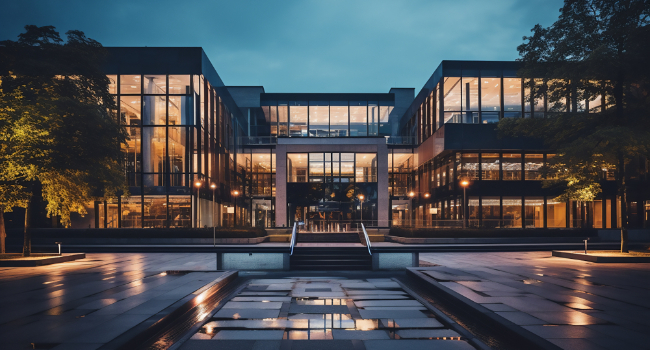
How Composable Security Technologies Fortify Campus Safety
- By Dave Baker
- April 28, 2025
Campus security teams have faced myriad risks threatening the safety and well-being of students and faculty this semester:
- Protests, which are common with any transition of power and legislative changes, bring heightened potential for altercations or infringement of First Amendment rights.
- Sports games and events can inspire energy that spirals out of control, making it challenging to contain situations and identify who is at fault if a fight or incident occurs.
- Bad actors rely on the cover of night to vandalize buildings, break into vehicles, or even commit arson.
Leaders have made tough tradeoffs about where to focus and how to channel limited resources to best protect their communities — but they now have a much-needed lift to their toolkit.
Rapid advancements in artificial intelligence (AI) have enabled powerful tools that offer essential capabilities to make the most of existing investments, deter potential incidents, and effectively pursue bad actors. Let’s examine which technologies you should consider and how to stay resilient no matter what challenges you face.
Technologies Improving School Safety
Today’s campus environment is wrought with disparate technology systems that do not communicate with each other, which greatly hampers efficiency (and wastes money).
The key to building a resilient campus security strategy is to connect disparate systems. Composable systems achieve this vision, in which every tool can connect and relay information back to a centralized platform.
Security teams need aggregated insights to make fast, informed decisions. It is not effective to use standalone systems for intrusion detection, door locks, and cameras — every tool needs to be composable so it can communicate with the entire ecosystem.
The following solutions have proven especially valuable as part of a connected security ecosystem:
- AI-powered security cameras: Cameras are no longer effective if they only record environments. Video camera solutions need to provide metadata on the objects they detect so teams can get ahead of potential threats. Active shooter scenarios, although rare, and similar attacks underscore the need for camera systems to proactively alert teams if a weapon is identified on campus. Time saves lives in urgent scenarios, so intelligent cameras that identify weapons can decrease response times and empower first responders with valuable information.
- Body cameras: Detailed evidence is vital for preserving truth. Body cameras are increasingly used to support incident review and provide objective evidence of an incident.
- Loudspeakers: Speakers can connect to other security solutions and trigger customized announcements or personalized warnings, demonstrating a strong security posture. Speakers can also trigger loud alarms that draw attention to an area when an incident occurs.
- Mobile security systems: Stationary cameras are not the only option for surveying areas. Drones and even robot dogs can be deployed to expand coverage and follow bad actors as they attempt to flee an area. These technologies offer a unique vantage point and provide the necessary flexibility for certain scenarios.
- Motion sensor lights: Lighting is an undeniable factor in deterring potential crime. Paths should constantly be well-lit, and motion sensor lights can safeguard less traveled areas. Better visibility also allows cameras to gather an accurate look at the environment.
- Security operations centers: Teams can drive effective responses using a security operations center (SOC) that integrates seamlessly with all security tools. The SOC is the hub for all information and empowers security personnel with an intuitive interface to engage with any security measure.
- Thermal detection tools: Campus landscaping presents a challenge when positioning cameras; in many settings, cameras cannot monitor every angle. To work around landscaping and visual impairments, teams can implement thermal technologies that warn of late-night activities that cameras may not see.
Each of these may be a valuable addition to your safety toolkit. At a minimum, check with your existing providers to understand what features you may be underutilizing and how to connect the solution with your other tools.
Bringing Students Into the Safety Conversation
Students deserve to feel safe on campus. However, they may not know about the resources available to them, and they may be skeptical about new technologies or a perceived increase in security personnel.
Campus leaders should educate students and faculty on the measures in place to protect them and how each solution works:
- Overview common safety threats and provide resources to navigate potential safety concerns.
- Discuss what technology your security team uses and invite questions to dispel misconceptions, like whether facial recognition is used or if students are “being tracked.”
- Celebrate safety wins and acknowledge how your team has addressed situations swiftly.
Keeping Pace with Evolving Campus Security Threats
The security world must embrace composability and connected solutions. Otherwise, valuable information will be lost or require too much time to aggregate. Full, connected information from security systems makes it easier to glean insights, fortify weaknesses, and share information from campus to campus.
By continually testing new capabilities and leveraging AI to its fullest potential, campus leaders can tackle any new challenges in stride.
This article originally appeared in the May / June 2025 issue of Campus Security Today.
About the Author
Dave Baker is Senior Solutions Architect at LiveView Technologies (LVT)